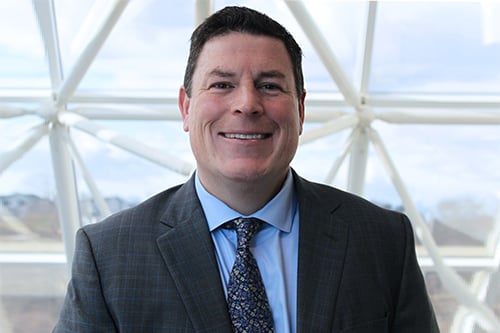

The directors and officers (D&O) insurance marketplace is down in the dumps amid the coronavirus pandemic. According to USI’s “Q2-2020 Commercial Property & Casualty Insurance Market Outlook Report,” both the public and private company marketplaces continue to see premium and retention increases, “with COVID-19 hastening the pace.”
On the public company side, significant premium increases that occurred in the last half of 2019 have not yet abated in 2020 and USI does “not anticipate any change of course for the rest of 2020 – in fact, an acceleration is likely.” This more intensified hardening in the market has been a long time coming.
“There was a firming in the D&O market going back arguably two and a half years that was accelerated pretty dramatically in 2019, particularly the second half of 2019, for publicly traded companies,” said Andrew Doherty (pictured), national D&O practice leader at USI Insurance Services. “Heading into 2020, we anticipated a hardening public D&O marketplace, and we were seeing that, and then COVID-19 proved to be an accelerant.”
The changes in the D&O market that kicked off around 2018 came as a result of three factors, according to Winsee Cheung, FINPRO and management liability placement leader at Marsh, who spoke on the topic during a recent Marsh webinar titled, “COVID-19: Considerations from a Director and Officer Perspective.” The first reason for the shift was the oversupply of capacity.
“Up until 2018, we had over a decade of softening rates and broadening of cover, and that’s really considered a prolonged soft market,” she explained. “Usually, soft markets would last for about seven years, but the last soft market … lasted more like 12 to 15 years.”
At the same time, there was an increase in claims activity that Cheung called “unprecedented.” US securities class actions against companies domiciled outside of the US, but with US filings, saw an uptick, as did the number of legal disputes led by US plaintiffs’ law firms. The cost of litigation likewise rose.
Read more: Premiums double as litigation soars
Finally, noted Cheung, “Prior year development is the third and probably the most key reason why we’re seeing this shift in market appetite.” Since D&O is a longtail business, markets don’t start to pay out on claims until years into the post-policy period. That means that claims filed several years ago have only been paid out recently.
Fast-forward to 2020 and COVID-19 has disrupted the marketplace even further. The pandemic has brought about several D&O-related impacts, including the pressure it has put on the economy, as well as the pressure it has put on public companies to deal with their disclosures around COVID-19 showing how they’re responding and how their business will perform. There’s also a concern that in future quarters, if the performance of the company doesn’t match the disclosures, there could be securities class action litigation. Another fallout from COVID-19 is that there’s a fear that companies that were financially weak going into the pandemic could declare bankruptcy, and that could be an impetus for claims against the company as well, noted Doherty.
The wave of expected litigation stemming from COVID-19 has already started to make itself known. Since the pandemic began to spread more rapidly in the US, the USI expert said there’s been about 15 coronavirus-related securities class actions that have popped up. With Q2 results now coming in, it’s also going to become more evident soon how impacted companies’ performances have been by the pandemic. In the meantime, Doherty says not to let the current stats on securities class action estimates fool you.
“The annual prediction for securities class actions actually is trending about 15% less than 2019, but it’s still well above the historical average and it’s still trending towards about 350 annually,” he explained. “So, it’s still concerning for D&O underwriters.”
The reason for the potentially deceiving numbers is that historically there has been a lot of D&O litigation around mergers and acquisitions, but as a result of the pandemic, M&A activity has slowed down and in turn brought a slowdown in securities claims. Nonetheless, underwriters are treating 2020 as another year with heightened securities class actions, continued Doherty.
In this environment, USI’s current guidance to insureds and their brokers and agents is to start early and consider how a company’s D&O renewal went last year as well as what type of increase they may have taken.
“For companies that were still very competitively priced, even if they are very attractive D&O risks, their percentage increases are still relatively high because their starting point was lower,” said Doherty. “For companies that experienced a tough renewal in 2019 that are coming into 2020, we are anticipating another tough year, unfortunately. While the band that we put in our report was 25% to 75% for public companies, and 10% to 50% for privately held companies, we recognize that even those top-end numbers may get blown through in extreme cases. Those extreme cases are claims history, financial weakness in the company, volatility in the stock market depending on the industry, overall market capitalization, and the amount of D&O bought.”
